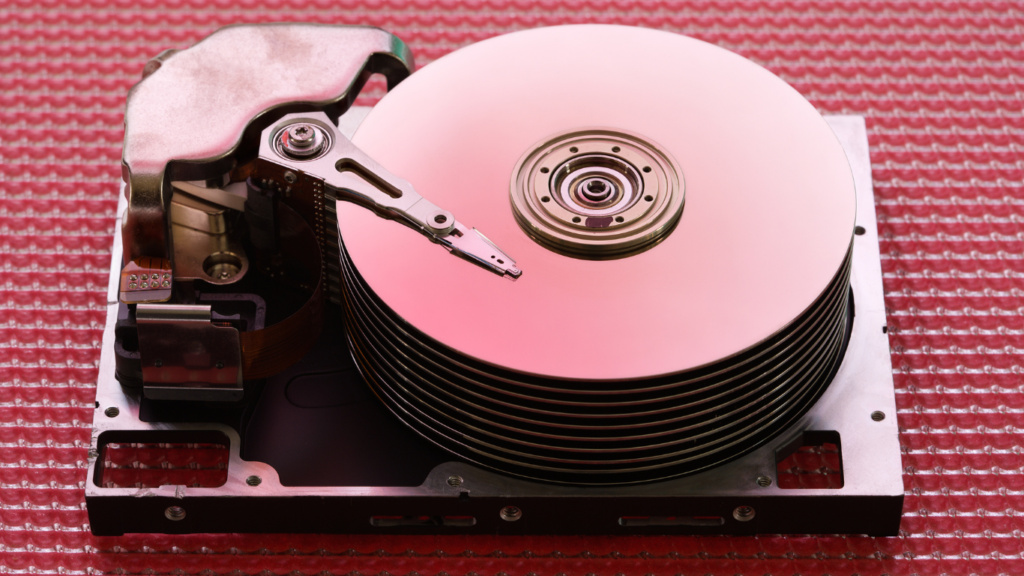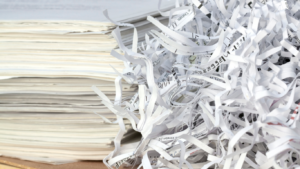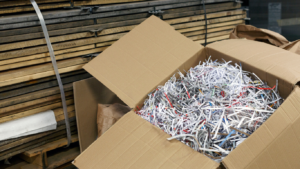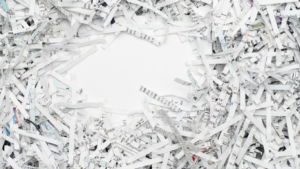
Steps to Hard Drive Destruction
There are many ways to do it regarding hard drive destruction. You can use a hammer, a drill, or even a fire. In this blog post, we will discuss some different ways to destroy a hard drive. We will also talk about the pros and cons of each method. By the end of this post, you will know which way is best for you!
Backup your data
When getting rid of an old hard drive, it’s essential to consider data security. After all, a hard drive can store much personal and sensitive information. If the wrong person gets their hands on your hard drive, they could gain access to your financial records, health information, and more. To protect your data, it’s essential to take some simple steps to destroy your hard drive before you dispose of it.
One of the most important steps is to back up your data. This way, even if your hard drive falls into the wrong hands, your sensitive information will be safe. There are several ways to back up data, including using an external hard drive or cloud storage. Once you’ve backed up your data, you can move on to destroying your hard drive.
Format your hard drive
Governments and regulatory bodies have recently introduced stringent data protection regulations to protect individuals’ privacy rights. Organizations are now legally obligated to handle and dispose of personal data securely. Failure to comply with these regulations can result in severe penalties and reputational damage. Secure brutal drive destruction plays a vital role in meeting these compliance requirements by ensuring that data is destroyed beyond recovery, providing organizations with peace of mind and legal protection. As the risk of cyber attacks continues to rise, proper data disposal methods are critical for protecting sensitive information.
Regarding brutal drive destruction, Chicago organizations understand the importance of using professional and secure methods to ensure data is destroyed beyond recovery. By doing so, businesses can comply with data protection regulations such as HIPAA and PCI DSS, safeguarding themselves from legal penalties and reputational damage. With Chicago’s strong focus on cybersecurity measures and employee training in data security awareness, it’s clear that the city takes data protection seriously – and securing brutal drive destruction is an essential component of this approach.
Delete all files and folders
One of the essential steps in hard drive destruction is to delete all files and folders. This ensures that any sensitive data on the drive is irretrievably lost and cannot be accessed by anyone who finds the drive. You can use a file shredder program such as Recuva or Eraser. These programs overwrite all of the data on the drive with random characters, making it impossible to recover the original information.
Alternatively, you can physically destroy the hard drive. This can be done by disintegrating it with a hammer or drill or using a commercial hard drive destroyer. Whichever method you choose, it is essential to ensure all files and folders are deleted before proceeding to the next step in hard drive destruction.
Wipe the hard drive clean with a secure erase tool
Properly destroying a hard drive is essential to prevent sensitive data from falling into the wrong hands. There are a few different ways to destroy a hard drive, but one of the most effective is to use a secure erase tool. This will overwrite all of the data on the drive, making it impossible to recover.
You first need to boot up from a CD or USB drive to use a secure erase tool. Once the tool is open, you must select the hard drive you want to erase. Once the hard drive is selected, you must choose the “Secure Erase” option and follow the prompts. After the secure erase process, your hard drive will be wiped entirely clean.
Physically destroy the hard drive
Drive Destruction is physically destroying a hard drive so that the data it contains can no longer be accessed. There are several ways to destroy a hard drive. Still, the most effective method is physically smashing it with a hammer or drill. This will damage the disk platters and break the read/write head, rendering the drive unusable. Another way to destroy a hard drive is to subject it to extreme heat or cold.
This can be done by using a blow torch or freezing the drive in a block of ice. Either method will cause the disk platters to shatter, making it impossible to recover the data. Finally, you can remove all components from the hard drive and dispose of them in different trash cans. This will make it difficult for anyone to put the drive back together and access the data.
Dispose of the hard drive in an environmentally friendly way
One way to ensure that your confidential data is not compromised is to destroy your hard drive physically. While there are several ways to do this, choosing an effective and environmentally friendly method is essential. One option is to use a hammer to pound the hard drive into small pieces. This will render the data inaccessible and prevent the hard drive from being reused.
Another option is to use a drill to make a hole in the hard drive. This will damage the internal components, making it impossible to retrieve data. Whichever method you choose, ensure the hard drive is destroyed before disposing it in your regular trash. By taking these precautions, you can rest assured that your sensitive information will remain safe and secure.
Summary
Hard drive destruction is destroying a hard drive so it can no longer be used. There are several ways to destroy a hard drive, but the most common method is physically destroying the drive. This can be done with a hammer, drill, or another tool. Whatever method you use, the goal is to ensure the drive is completely unusable. We offer hard drive destruction services at Chicagoland Shredding Services if you’re looking to destroy a hard drive. We are a certified hard drive destruction company. We use a specialized hard drive destroyer to ensure your data is destroyed. Contact us today to learn more about our services.

Why Off-site Shredding is the Best Choice for Chicago Businesses

On-Site Mobile Shredding in Chicago: Ensuring Secure Document Disposal




